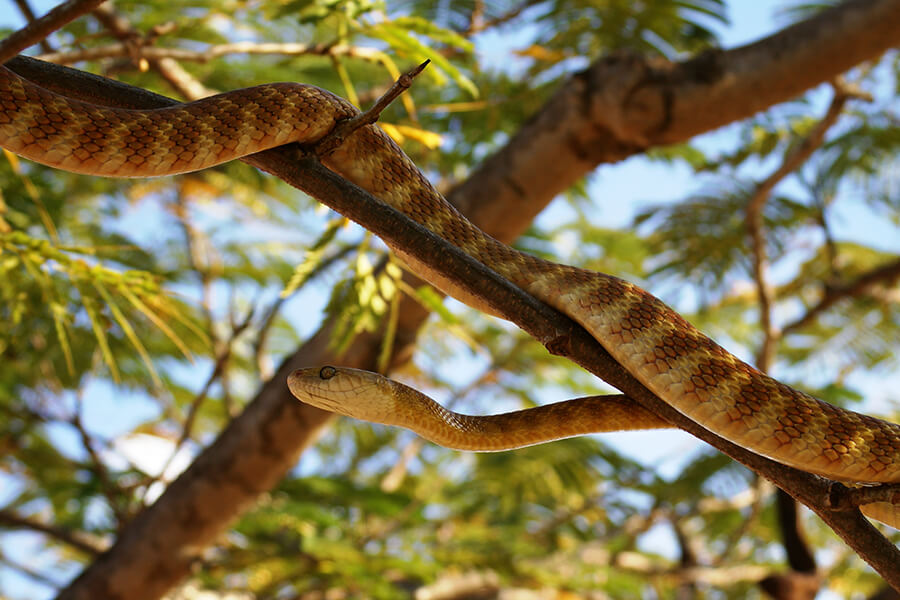Introduction
When it pertains to poisonous snakes, Australia is home to several of one of the most fascinating and hazardous types in the world. Amongst these, the Tiger Snake attracts attention not just for its potent venom but likewise for its fascinating actions. Comprehending the habits of poisonous serpents like the Tiger Serpent is essential for both wild animals fanatics and those staying in areas where these snakes exist. This short article explores various elements of Tiger Snake actions, habitat, identification, safety measures, and emergency treatment techniques in instance of a serpent bite.
Understanding the Actions of Venomous Snakes Like the Tiger Snake
The Tiger Snake, scientifically called Notechis scutatus, is infamous for its aggressive nature when endangered. These serpents show a variety of behaviors that can be fairly various from their non-venomous equivalents.
Characteristics of Tiger Snakes
The Tiger Snake is quickly identifiable as a result of its distinct bands or stripes that resemble a tiger's markings. They can differ in color from yellowish-brown to dark olive or black. This pigmentation offers not only as camouflage yet likewise as a caution signal to prospective predators.
copperhead snake tasmania
Adaptability to Environment
One remarkable facet of their habits is their adaptability to different atmospheres. Discovered primarily in coastal regions, marshes, and marshes across Australia and Tasmania, they can thrive in varied habitats including urban locations.
Hunting Techniques
Tiger Snakes are ambush predators mainly feeding on fish, frogs, and tiny creatures. They possess eager sight and an acute sense of scent which helps them in finding target effectively.
Venom Composition
Their venom contains neurotoxins that influence the nervous system, leading to paralysis or fatality in smaller animals. For people, prompt medical focus Brown snake identification is vital after a tiger serpent bite as a result of its possibly dangerous effects.

Natural Environment of Tiger Snakes
Preferred Locations
Understanding where these serpents stay sheds light on their behavioral patterns. The tiger snake habitat includes:
- Coastal regions Swamps Grasslands Urban locations with bountiful water sources
Seasonal Movements
During warmer months, Tiger Snakes are much more energetic as they bask in sunshine or search for food. In contrast, cooler months see them pulling away right into hibernation sites.
Are Tiger Snakes Venomous?
Yes! The inquiry "are tiger snakes poisonous?" often emerges among those unfamiliar with this types. Their poison is thought about one of the deadliest among all snake varieties worldwide.
Symptoms of a Tiger Snake Bite
If bitten by a tiger serpent, signs may consist of:
- Localized pain Swelling at the bite site Nausea and vomiting Sweating and confusion
Immediate medical help is critical as untreated bites can cause extreme wellness issues and even death.
First Aid for Snake Bites: Quick Reaction Guide
Knowing how to carry out first aid for a snake bite can conserve somebody's life. Below's what you should do:
Step 1: Remain Calm
Keeping calm helps reduce heart price which minimizes venom spread.
Step 2: Immobilize the Influenced Area
Keep the affected arm or leg still and below heart level if possible.

Step 3: Call Emergency Situation Services
Always seek specialist medical assistance promptly after a snake bite.
First Aid for Snake Bite Kit Essentials
A fully equipped snake bite first aid kit ought to include:
- A compression bandage Antiseptic wipes A set of scissors An ice bag
Safety Precautions: Protecting against Snake Bites in Australia
Awareness Programs
Educating communities about regional serpent types and their actions can significantly reduce encounters resulting in bites.
Avoiding Unsafe Areas
Staying far from long turf during warmer months decreases contact with snakes that may be resting or hunting.
Common False impressions About Tiger Snakes
Many people think misunderstandings concerning the actions of tiger snakes lead to unnecessary worry. Here are some clarifications:
Myth 1: All Tigers Are Aggressive
Not all tiger serpents will show aggression if left uninterrupted; many prefer leaving rather than confrontation.
Myth 2: They Chase Humans
Tiger serpents do not proactively chase humans; they may strike different types of snakes when they feel endangered yet will usually pull away if offered space.
Conservation Initiatives Related to Venomous Snakes
Conservation efforts focus on informing areas concerning securing neighborhood wildlife while lessening human-snake interactions.
Importance of Ecosystems
Understanding that venomous snakes play an important function in preserving environmental equilibrium aids foster admiration instead of worry in the direction of them.

FAQs Concerning Tiger Snakes
What needs to I do if I come across a tiger snake?- Maintain distance and gradually back away without sudden movements.
- While attacks aren't very common due to recognition initiatives, they still happen annually within Australia.
- Baby tiger serpents can supply full doses of venom in spite of being smaller; thus caution is suggested around them.
- They primarily take in frogs, fish, little creatures like rodents, and various other reptiles.
- It's unlawful in a lot of territories without proper licensing because of safety and security worries regarding their venom.
- Wear strong boots and remain on marked routes; appearance before putting hands or feet right into hidden areas like rocks or logs.
Conclusion
Understanding the actions of poisonous snakes like the Tiger Snake not only enhances our understanding but likewise promotes safety awareness among those living near their habitats. From identifying their features, understanding first aid procedures following a bite, with engaging conservation efforts-- every facet plays an important duty in promoting coexistence with these remarkable reptiles while valuing their area within our ecosystem.
As we grow our understanding with education and experience, we add positively toward guaranteeing both human safety and wild animals conservation-- benefitting all parties involved!